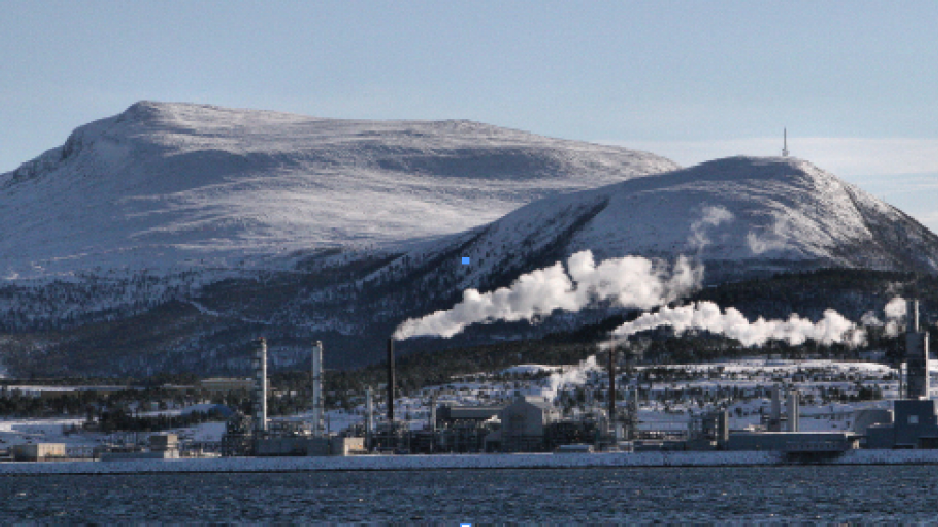Two “green” oil refineries proposed for the B.C. northwest coast may have some serious competition in Chetwynd: a refinery that would make gasoline from natural gas and hydrogen, not oil.
Juergen Puetter, president of Aeolis Wind Power Corp. and CEO of Blue Fuel Energy Corp., has been quietly assembling a multibillion-dollar, two-phase plan to build a gasoline refinery in Chetwynd, followed by a methanol plant a couple of years later.
“We have the land, we have the First Nations on board, we are in the middle of permitting,” Puetter said.
The company also has two former senior Methanex Corp. (TSX:MX) executives on board: Michael Macdonald, Methanex’s former senior vice-president of global operations, and Ron Britton, former senior vice-president, who is Blue Fuel’s new chief technology officer.
The first phase of the project would be a refinery at a cost of $2 billion to $2.5 billion that would use natural gas – readily available in the Chetwynd area – and hydrogen and oxygen from water. It would be followed by a $1.8 billion methanol plant.
Using technology licensed from ExxonMobil, the plant would make methanol from natural gas, which would then be made into a low-carbon gasoline, using the hydrogen and oxygen parsed from water.
The energy inputs to separate the hydrogen and oxygen atoms in a water molecule are high. Puetter said the Sundance Fuels project will require 150 megawatts of power (about one-seventh the capacity of the Site C dam), which it would get from the grid.
Aeolis, which developed the Bear Mountain wind farm, also has several other large wind farm prospects, and Puetter hopes that some of the power needed could eventually come from wind.
He said all of the chemical processes that would be used are tried and true, they just haven’t been put together before on any large scale to produce gasoline from natural gas.
“There are some major technological steps forward and putting it together is not easy,” he said. “We’ve been at this for five years. Nobody’s done this on this scale before.”
Such a plant would not be feasible in many other jurisdictions. But Puetter said B.C. has the right combination of resources and policies that make it viable.
In North America, natural gas is abundant and cheap. B.C. also has relatively low-cost electricity and a low carbon fuel standard.
Low carbon fuel standards are designed to address the life cycle of carbon dioxide produced in the process of extracting oil, refining it into gasoline and then burning it. One of the reasons Alberta oilsands bitumen has such a negative reputation is that its life cycle is more carbon-intensive than gasoline made from conventional oil, according to the Natural Resources Defense Council.
Using “renewable” hydrogen from water would help lower the carbon intensity of the gasoline the Sundance Fuels plant would produce to meet low carbon fuel standards.
“In Alberta this wouldn’t work, because if you did the same thing in Alberta, and used Alberta grid power – it’s all made from coal – the carbon intensity would go up,” Puetter said.
The site in Chetwynd is also advantageous. The company has acquired 1,065 acres of private land just outside of the town that has rail access. The fuel and methanol it produced could therefore be shipped by rail.
“We don’t require a pipeline, so we think we’re going to be ahead of any LNG project,” Puetter said.
Chetwynd Mayor Merlin Nichols said the project would be a welcome economic development.
“We’re supportive,” he said. “The nature of the plant, the nature of the product and the nature of the jobs created – long-term, high-quality, high-paying jobs – it would be good for the town.”
Local First Nations are also on board, Puetter said. Under an agreement with First Nations, Sundance Fuels would provide waste heat, which First Nations could use in greenhouses.
“You wouldn’t normally think of building greenhouses in the Peace region, because it’s so cold,” Puetter said. “But if the energy is free, it becomes a totally different ball game because land is very cheap there and making it a fully First Nation-owned business turns out to be extraordinarily attractive.”




